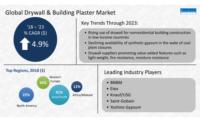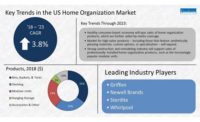Conservation projects at 35 Lafarge North America sites across the U.S. were certified or recertified this year by the Wildlife Habitat Council (WHC). Twenty-eight of these projects fall under WHC’s Wildlife at Work program, which oversees voluntary efforts that go beyond regulatory requirements to restore and conserve wildlife habitats on corporate-owned land. The remaining seven projects operate under WHC’s Corporate Lands for Learning certification, which goes a step further by opening up corporate lands to the local community for educational use.
WHC works with businesses to translate corporate sustainability goals and objectives into measurable real-world action that address a habitat’s most pressing needs. By building collaboration among corporations, other conservation organizations, government agencies and local residents, WHC conservation programs strive to build healthy ecosystems and connected communities.
Since 2008, Lafarge has been working with WHC to restore and preserve habitats where they operate through projects that promote the diversity of native plants and animals. The Lafarge programs certified under WHC’s Corporate Lands for Learning also serve as hands-on outdoor classrooms for local schools and community groups. Examples of these conservation initiatives include planting trees and shrubs to enhance habitats, establishing gardens that attract essential pollinators, mounting bird houses, building brush piles to provide cover for animals, and building and maintaining water supplies.
“Working with WHC ensures that we direct our efforts in ways that provide the most benefit to the respective habitats at our many U.S. locations,” says Craig Campbell, vice president of environment, public affairs and land for Lafarge U.S. “Sustainability is woven into everything we do at Lafarge, and that means doing what we can to preserve the environment, support our local communities, and protect the biodiversity of the land we own. It’s the right thing to do, and it’s a critical component of the work we do contributing to the building of better cities and communities.”




Report Abusive Comment